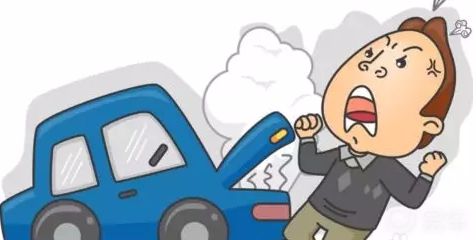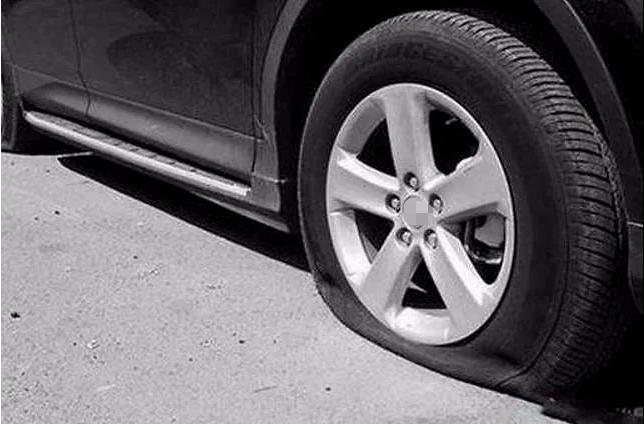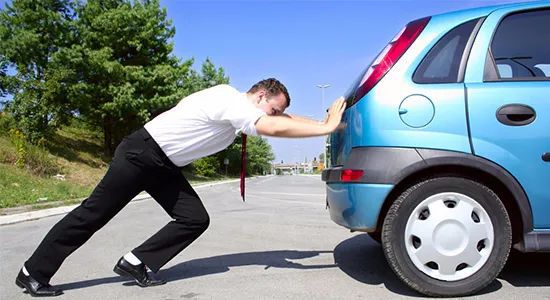Car breakdowns have brought great hidden dangers to our travel safety. As a qualified auto parts person, we should master some basic car maintenance knowledge

1. For cars that are randomly connected or self-connected to the electrical appliances and audio in the car, first check the overlapping parts and the circuit of the overlapping parts, and troubleshoot the fault. Because of the random connection of electrical appliances and audio devices, it is very easy to cause the failure of the car computer and other electrical appliances. Therefore, such failures should be eliminated first, and then repaired and replaced with other damaged parts, which can avoid repeated rework and repair.
2. For a car that has not been repaired for a long time, you should first check the car’s VIN 17-digit code, find out the make, model, and year, and conduct an inquiry. Don't be busy checking the test car first. Often this type of car is blindly disassembled and assembled by a "roadside shop" that causes complex failures, and the disassembled parts are mostly fake and inferior parts. Therefore, the repair conditions (can be repaired, when to repair, etc.) should be declared to the owner to prevent mistakes. Since there are many such lessons, it is necessary to take precautions before they happen.
3. Starting from the investigation of automobile retrofit parts, automobile retrofit parts are often the area with a high incidence of failures. In order to meet the needs of the market, air-conditioning devices have been installed in recent years, but the engine has not been improved. After the air conditioner is installed, the power dissipation increases, resulting in insufficient power of the original engine and poor air conditioning effect. The air conditioner clutch is repeatedly closed and easily burned. Therefore, the fault location can be quickly determined through the air conditioning sound. After installing a turbocharger on an Iveco car, some parts are of poor quality, which is prone to air leakage and bearing burnout. Therefore, the engine is weak when climbing and accelerating (can be judged from the sound). You can first observe and check the turbocharger. Whether the device has blow-by and abnormal noise.
4. Find the fault from the modified parts. For self-modified vehicles, such as the use of R134 coolant for the conversion of gasoline to diesel, and fluorine-added air conditioners, if the vehicle has insufficient power, electrical appliances burned, and the air conditioning effect is poor or damaged, you should first look for the voltage converter, the replacement circuit and the replacement parts of the air conditioner Eligibility.
5. For vehicles to be repaired, first look for the original repair location. The following conditions: Whether the replacement parts are fake and inferior parts; whether the disassembly parts are installed incorrectly (left, right, front, back, and up and down); whether the mating parts are aligned with the assembly marks; whether the disposable disassembly parts (important bolts and nuts) are replaced according to the manufacturer's requirements , Shaft pins, gaskets, O-rings, etc.); whether the parts (such as damping springs) are replaced in pairs according to the manufacturer's requirements; whether the balance test (such as tires) is carried out after the repair, and after the above factors are eliminated, analyze and check other parts .
6. For high-end cars that stall and are difficult to start due to collisions and violent vibrations, check the safety locking device first, and do not blindly look for other component failures. In fact, as long as the safety locking device is reset, the car can be restarted. Fukang 988, Japanese Lexus, Ford and other vehicles have this device.
7. Find faults from domestic parts. In the process of localization of the joint-venture cars, some of the domestically-made parts loaded on the cars are indeed of low quality. This can be found from the comparison of the phenomenon before and after the replacement of domestic parts. For example, Iveco, the brake drums, discs, and pads are replaced with domestic parts after the brake system has a higher failure rate than the original imported parts. Therefore, when checking for failures, you should start with this. Don't check the brake master cylinder, sub-cylinder and other components first. After the carbon canister on the Fukang EFI car is replaced with domestic parts, it is noisy and easy to leak oil. Therefore, when the engine produces abnormal noise, first check whether the carbon canister is working properly. All these are facts that exist objectively at present and cannot be avoided.
8. Start with the non-electronic injection parts. Imported cars and joint-venture cars have early failures such as poor idle speed and acceleration lag. First, check and clean the carbon and rubber deposits from the nozzles, intake flow meters, intake pressure sensors, and idle speed rooms that are prone to carbon deposits and glue deposits. Do not blindly inspect other components such as EFI, because EFI components are generally more reliable, and currently a considerable part of EFI failures are caused by low oil quality in my country.
The above introduces the related content of common car failures and maintenance knowledge. Let's take a look at what are the common car failures?
What to do if the car's performance drops?
When the car’s performance declines, the following methods can be used: For the oil and oil filter, replace it every 5000 kilometers, while the air filter and gasoline filter need to be replaced every 10,000 kilometers. Otherwise, the impurities in the air, fuel and oil will cause the parts to wear and block the oil circuit, thereby affecting the normal operation of the engine. Cars should be maintained well, and regular maintenance and repairs should be carried out.


What should I do if a car tire is flat ?
As the shoes on the four big feet of a car, tires are always in intimate contact with various complicated things. Therefore, tires always have various problems. Air leakage is one of them. Let’s talk about it below. How to deal with a flat tire:
If the car is punctured by a sharp object and causes the car to leak, you can take a comprehensive inspection of the car's tires. When the steering wheel is not stable, stop the car in a safe place, and then check the tire air loss.
If the vehicle leaks due to the wrong driving method, you can take the driving method that pays attention to correct operation.
1. Master the speed, and avoid sharp things such as rocks on the road in time.
2. When parking, try to stay away from the road teeth to avoid scratches.
3. The tires should be replaced in time when repairs are not possible.
What should I do if the car can't start ?
In this diversified new era, cars are not only a means of transportation for people's lives, but also an expression of consumers' own personalities, thoughts, and pursuits, and they are an indispensable part of human life. But in the face of the car's failure to start, we should first find out the reason why the car can't start, and then prescribe the right medicine.
1. The ignition system is not working well
Especially in cold weather, because the intake air temperature is low, the fuel atomization in the cylinder is not good. If the ignition energy is not enough, the cylinder flooding phenomenon will occur as a result, that is, too much fuel accumulates in the cylinder, exceeding the ignition limit concentration and cannot be reached. vehicle.
Emergency method: You can unscrew the spark plug to wipe off the oil between the electrodes, and then you can start the car after reinstalling it. The thorough method is to check the ignition system to eliminate the reasons for low ignition energy, such as spark plug electrode gap, ignition coil energy, high-voltage line status, etc.

2. Frozen exhaust pipe
The appearance is characterized by the pressure of the fog cylinder, the normal fuel supply and power supply, and the car does not start. This situation is likely to occur in vehicles with a particularly low frequency of use. For example, when the home is very close to the unit, the water vapor after the combustion of the engine freezes at the muffler of the exhaust pipe, and the ice of yesterday has not been melted for short-distance driving, and the ice of today has frozen. , If it takes a long time, it will affect the exhaust, and if it is serious, it will not be able to start.
Emergency method: Put the car in a warm environment, it can start naturally when it freezes. To solve the problem completely, you can go to a high speed in time, and if the car runs more, the heat of the exhaust gas will completely melt the ice and be discharged.
3. Battery loss
Its characteristic is that the starter starts to rotate but the speed is not enough, that is, it is weak, and then the starter only clicks and does not rotate. The low temperature in winter and the forgetting to turn off individual electrical equipment will cause the vehicle to fail to start, especially in the winter for long-term short-distance low-speed use, the battery voltage will be lower than the rated value, starting and unable to operate normally.
Emergency method: If something happens, please call the service station for rescue, or find a car, or temporarily catch fire, and then you must go to the service station to recharge the battery.
4. Valve glue
In winter cars, especially after using unclean gasoline, the incombustible gum in gasoline will accumulate near the intake and exhaust valves and combustion chambers. It will cause strenuous starting or even not catch fire in the cold morning.
Emergency method: You can drop some oil into the combustion chamber, and it can generally be started. After starting, go to the service station for disassembly-free cleaning, and in serious cases, the car should be disassembled for maintenance and clean the cylinder head.
5. Gasoline flow is blocked
The performance characteristic is that there is no oil pressure in the engine oil supply pipe. This situation mostly occurs in the morning when the temperature is particularly low, and it is caused by long-term dirty fuel pipelines. When the temperature is extremely low, the mixing of water and debris makes the fuel line blocked, and as a result, it cannot be started.
Emergency method: Put the car in a warm environment and start the car in a while; or use the method of cleaning the oil circuit to solve it completely.
Post time: Dec-20-2021

